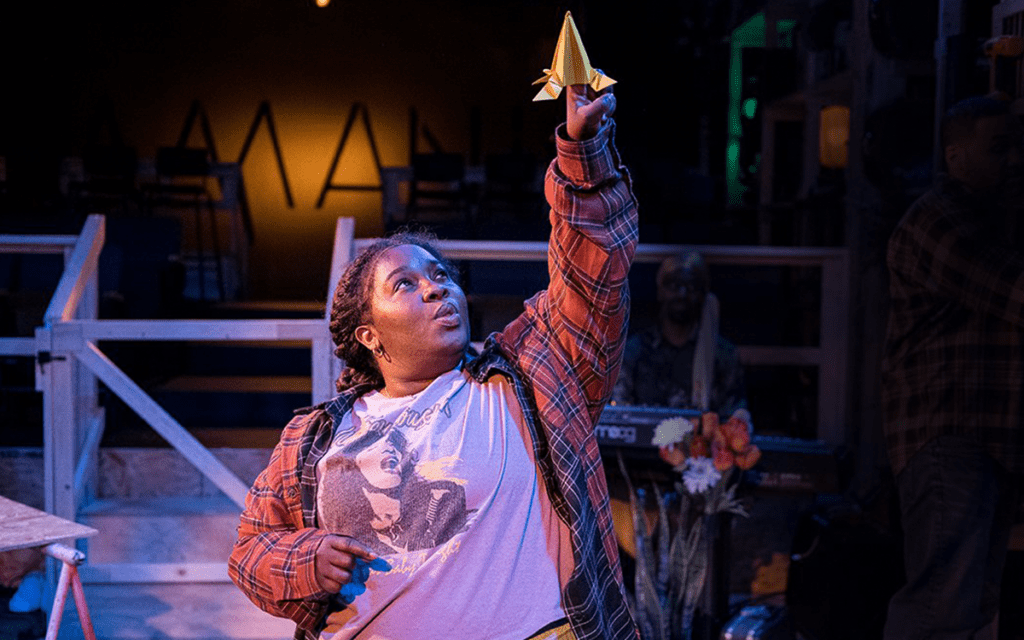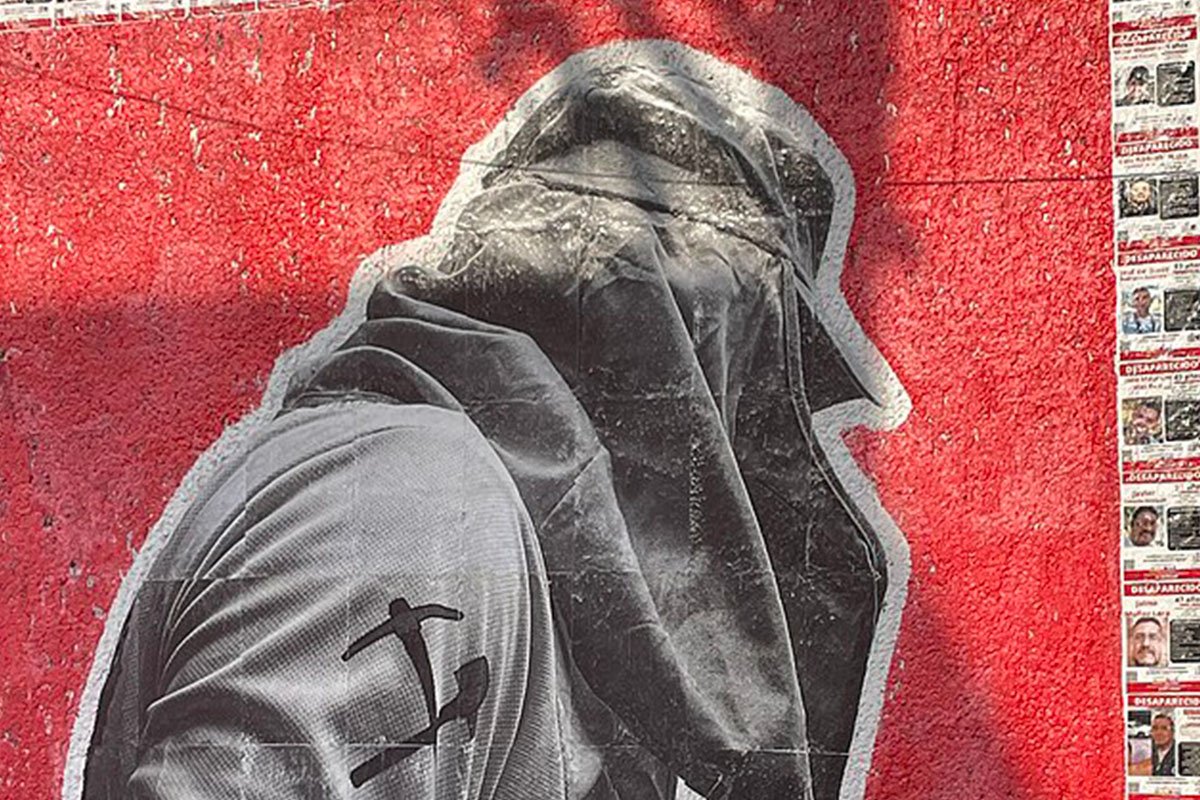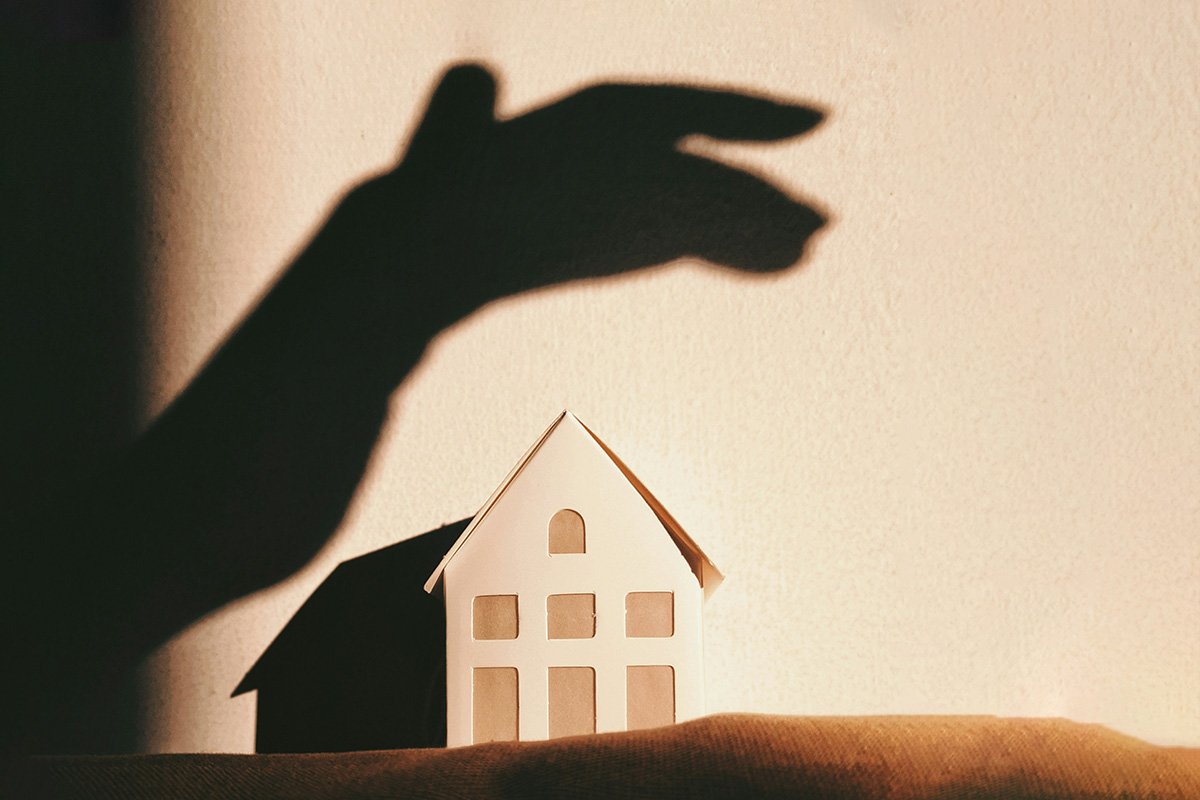
Space is emerging as a frontier for liberation. How often have you heard a struggling mom, when asked what they need, answer that they just need a bit of “space”? Or a friend in crisis, perhaps recently laid off and unsure which direction to take, say that they need “space” to figure out what they want, who they are? We may not always be acutely searching for a path toward liberation when vocalizing our needs for space, but our liberation does necessitate it.
a.k. payne’s (she/they) professional debut play Amani, which closed at Rattlestick Theater in New York City last month, grapples with this very concept. It articulates an inherent need for space in the quest for liberation while playing with what that space looks like. Do we need to reach outer space in our quest for liberation? Or an inner space, deep inside us, which allows us to dream? Or space with one another, to heal and be seen? “Yes,” payne says.
As the playbill describes it,
Amani grows up building a rocket ship with her father, who vows to make it to outer space: where his child can breathe easy, where there are no gangs to take his first love’s life, nor prisons to take Black boys’ best years. As Amani moves into adulthood, she seeks her voice and her own dreams. Will Amani make it to the moon?
I take my seat, the house lights dim, and the prologue begins. Onstage before me stands Amani, a short, curvy Black girl, taking up space with truly embodied presence.
Walking into Rattlestick’s West Village theater, I am immediately invited into an intimate space. The staging, which spreads throughout the house into the seating area, feels akin to walking into the living room of someone who has collected their life’s memories and put them on display. Photos, a space helmet, and other knickknacks line the shelving built into the stage.
I take my seat, the house lights dim, and the prologue begins. Onstage before me stands Amani, a short, curvy Black girl, taking up space with truly embodied presence. She monologues, expressing her fear of returning to some painful memory, some locked-away place, a place that we later learn holds the grief of loss. Beside her stands Kofa (they/them), Amani’s childhood friend. Listening. “Holding space,” as payne writes in the script. We are witnessing a girl’s attempt to heal.
The Search for Outer Space
payne holds this space for their characters in many ways, including in their ordering of events throughout the play. After we see Kofa holding space for Amani onstage, we see Amani’s father, Smith, returning to his family home in an orange jumpsuit. A freed man trying to adjust to the walls of his world suddenly expanding. And then, we are back in time, a few years prior, when Smith was incarcerated. We see Amani speaking with him in prison, still full of that unhindered light from the prologue. And Smith, though clearly beleaguered, prioritizes protecting this light in his daughter. Together, they repeat their mantra: “We come from light and we still light / and where the light shine / wherever we go.”
Then, suddenly, we see Smith being visited by the ghost of his lost love, Dasia, the mother of his child. We don’t know yet who she is. But we are given intimate access to the inner workings of Smith’s memory. Dasia helps Smith set up a workshop in his garden, and then we see Smith and Amani in “present time,” building the rocket ship Smith has named “Amani’s Ship.” We witness Smith shower Amani with the kind of fatherly love that allows a child to become whoever they want to be. As he teaches her how to saw wood to build their space ship, he reminds her who she is, and everything she is capable of. Father and daughter move around the stage with unhindered joy. We are thrust into a truly expansive world of childlike wonder and endless possibility. Suddenly, space ships can be built in backyards by Black families who dream of making it to space. And for me, the most beautiful part of it all is that Amani’s innocence and imagination has clearly been protected and cultivated by her ever-loving father.
Behind the Scenes with the Playwright
I got the chance to sit down with payne after the show, and our conversation colored in my already vibrant experience of this transformative play.
payne says the play did not always begin in this order.
In first previews, right before we opened at Rattlestick, I added the prologue of the play. The play for years had begun with Smith and Amani in prison. We didn’t have the prologue moment, which is when Amani sort of creates the space. . . .We saw the first full run of everything, and it felt like Amani was getting swallowed up in the space as opposed to Amani guiding us through the story. It was kind of like the entire space was imploding on this person. So, we tried to make some really intentional shifts to better center her and just allow her to be. . . .I was thinking about letting Amani be a child, letting Amani be imagined, and holding the complexity of what allowed her to come to be.
And with just a bit of space to be, Amani blossoms onstage. This transformation payne witnessed after making this change in the story suggests that perhaps space is all we need, to start. Space to be. To imagine. To define ourselves.
payne also affords Smith space.
My hope is to allow us to see Smith. To see Smith in his full complexity, to see Smith as this father, as this dreamer, as this genius before we see him as a person who has committed a crime. . . .We know he’s been incarcerated, but we don’t know the why, which I connect to a lot because I have a lot of family who have been incarcerated. . . .There are these questions that I really want to get to the core of around, how do we hold space for the person who’s been incarcerated? How do we hold space for the person who has been a child, who has been a father, who has been a person in their community?
A quest for healing marked the start of payne’s personal journey creating Amani, as well as the journey she maps for Amani throughout the play. She explains,
When I started writing this play, I’d just moved into my first own apartment, and I was thinking about healing, peace, and community, and what those things look like. I was thinking about how to tell a story that was inspired by freedom dreams and dreaming futures. . . .I think that this play is about the role of healing in liberation. I think that processing and engaging the past and its relationship to the present and also being really present with community is part of liberation too. That’s something I really care about.
As act 1 closes, Amani is 18, and her first love, Davion, has broken her heart and shattered the self-assurance her father helped her build. For the first time, we see Amani grieve and experience pain. No memory. No fatherly protection. Just pain. A mark of adulthood for a young Black girl, of innocence and confidence falling away.
This space Amani declares is gone is twofold—outer space, as the site for her and Smith’s liberation, and the inner space within her, full of light, that she and her father cultivated and kept alive—a decolonized, radical space in which she could dream (as is the meaning of her name) and imagine.
Davion tells Amani that not only is she nobody, but her father’s dreams of outer space are ludicrous. Perhaps in need of healing himself, Davion hates the way Amani “hold[s] [her]self up / like god.” So he tears her down. And it works. Amani comes home to her father, hating herself, and hating Smith for making her believe in herself. “You’ve filled me up with all these lies, all these stupid fucking lies,” she tells him, “I am not great. I am not infinite. What is a dream to a world like this?”
Amani demands that Smith make the space ship fly, and when he insists they have to wait until dawn, that the ship needs sunlight to fly, Amani’s fear is confirmed—Davion was right. This space ship was a foolish dream. Amani screams, “Fuck the light. We got no light. There is no light.” She takes a hammer to the space ship, splintering it to pieces, exclaiming, “There is no space! There. Is. No. Space!”
This space Amani declares is gone is twofold—outer space, as the site for her own and Smith’s liberation; and the inner space within her, full of light, that she and her father cultivated and kept alive—a decolonized, radical space in which she could dream (as is the meaning of her name) and imagine. For Amani, Davion’s words and her father’s hesitance to fly the ship are proof that these spaces never really existed.
Sign up for our free newsletters
Subscribe to NPQ's newsletters to have our top stories delivered directly to your inbox.
By signing up, you agree to our privacy policy and terms of use, and to receive messages from NPQ and our partners.
A Search for Inner Space
Act 2 begins with Dasia entering the space, young and alive. We see her luminous smile, and then her death—dead at the hands of a rival gang, killed for wearing blue in a sea of red. Then we see Smith. Three years after Dasia’s death, he finds Dasia’s murderer and beats him to the brink of death. He is sentenced to six years for aggravated assault.
Finally, we understand what has come to pass, what has created the Amani who stands before us. Perhaps we are getting this information now because she is finally confronting this trauma. In the play, time bends like memory, and it feels as if we learn details about Amani’s life only as she wants us to know them.
Now Amani is messy. She has come undone, her trauma unwound and facing her in real time. She sleeps with a series of disrespectful men, all while her mother’s spirit tries desperately to call out to her, “Your hair dry. You have not tended. . .”
Dasia’s poetic warning is a reminder to Amani that she has not tended to her inner garden. She has let men enter it and vandalize its grounds.
And then, finally, Amani shares the stage with the spirit of her mother. Dasia tends to her daughter’s hair as she guides her, “Breathe / with me and / imagine / what are / the colors in / your outer space?” With Dasia as her guide, Amani recreates her outer space. She speaks into existence all that it encompasses. Softly, she begins, “In my outer space / i want / pictures upon pictures / of you and dad / when you were living / want them lined across the sky.”
Amani begins to return to herself. It is a return to a space she always contained, a space to foster liberation within in order to manifest it “out there,” out in space. Her father gave her the tools to cultivate this inner space, to tend to her garden, and so on some level, she knows the way back to herself.
A Search for Loving Space
Still, there is one final space Amani needs. The space to be loved romantically and seen fully as she is. Afraid of the loneliness of reaching outer space on her own, Amani asks Dasia, “Is there a love that’s free?”
And then, Kofa returns, Amani’s childhood friend. Though Amani is still unsure if she still believes in outer space, Kofa appears, stating, “I’m getting my phd in astrophysics / i wanna be an astronaut / one day i wanna go to outer space.” Amani cannot believe it. Still speaking half to Dasia, Amani says, “Mama, i’ve never felt more seen.” Emboldened by her and Kofa’s shared dream, Amani speaks her outer space into existence more passionately, coloring in its every crevice, envisioning it with striking clarity. She speaks her right to be loved, truly loved. And Dasia blesses Amani’s desires, saying, “All that / which / you name / echo gainst / universe / & bounce back / ’pon / you.”
We witness Amani and Kofa joining together in what payne calls “the Audre Lorde sequence.”
In my mind, that’s what it reminds me of, Audre Lorde’s essay “The Erotic as Power.” I remember that sequence of movement, when Amani and Kofa go under the sheets and they’re pretending to be on the moon, the play and the joy in that, it just reminds me of that essay. The joy. . .and the erotic being something that is both sexual, both intimate, but also about just pleasure and joy and feeling and being seen.
Amani and Kofa are having sex, but it is so much more than that. At times they seem to merge as one, infinitely more beautiful than when they stood on their own. They heal each other, they tend to one another, they see the other exactly as they are, for all are, and all they have the capacity to be. As Audre Lorde writes in “The Erotic as Power,”
When we live outside ourselves, and by that I mean on external directives only rather than from our internal knowledge and needs, when we live away from those erotic guides from within ourselves, then our lives are limited by external and alien forms, and we conform to the needs of a structure that is not based on human need, let alone an individual’s. But when we begin to live from within outward, in touch with the power of the erotic within ourselves, and allowing that power to inform and illuminate our actions upon the world around us, then we begin to be responsible to ourselves in the deepest sense. For as we begin to recognize our deepest feelings, we begin to give up, of necessity, being satisfied with suffering and self-negation, and with the numbness which so often seems like their only alternative in our society. Our acts against oppression become integral with self, motivated and empowered from within.
This is the transformation that Kofa and Amani undergo onstage. Their erotic experience with one another allows Amani to heal that space of the inner self which was wounded. She is able to move forward with a whole and aligned self that recognizes its need for and right to liberation.
payne says,
When Amani is sitting with Kofa in Act Three, there’s this real presence that is all about, ‘if we were able to sit with each other and really be with each other in the world, what would that bring into fruition around the possibilities of liberation?’
For Amani and Kofa, it brings into fruition liberation itself. Amani and Kofa pledge to love each other fully, promising to “love each other in all the ways.” And from this love, they work through grief together as Smith passes away, and Amani is left picking up pieces of memories from the garden where she and Smith worked on their space ship. Kofa finds Smith’s ship blueprints and tells Amani, “I think / it would have flown.” Together, Amani and Kofa rebuild the ship. And, with full conviction, they prepare for takeoff. Smith and Dasia join them, ethereal, sending them off with a beautiful rendition of Robert Glasper’s “Afro Blue,” which has underscored the show. “Shades of delight / cocoa hue / rich as the night / afro blue.” And they’re off.
Long after the stage lights dimmed and the time came to pack up my things, I remained transfixed by the questions raised in this play. What would happen if we were all granted this kind of space? Space to dream, space to imagine, space to be seen?
With a cultivated inner space, a fully imagined outer space, and a loving communal space with Kofa, Amani and her lover reach liberation.
And on a larger level, payne’s artful framing of Amani’s story—beginning with dreaming rather than trauma, and ending with liberation—definitely holds space for Amani to “be,” to chart her path to outer space.
And does it have to be arduous, this search for liberatory space? Amani’s outer space was always accessible. Her father’s blueprints lay unused for years. And while it took her years to come to full consciousness and believe in liberation, her eventual transformation with the help of her mother and Kofa was near instant.
Long after the stage lights dimmed and the time came to pack up my things, I remained transfixed by the questions raised in this play. What would happen if we were all granted this kind of space? Space to dream, space to imagine, space to be seen?











